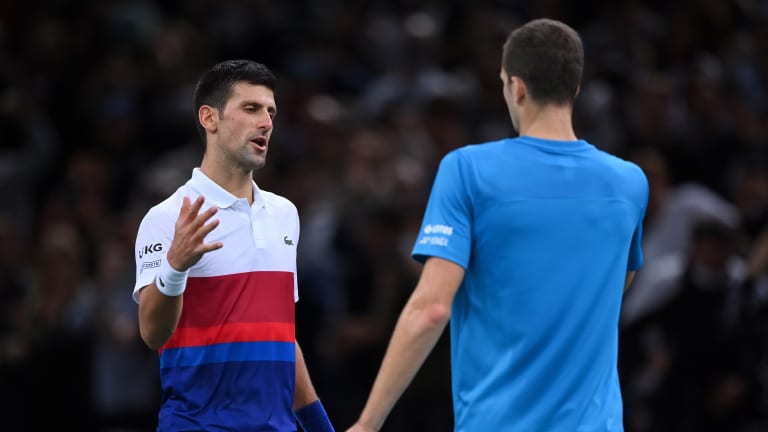ATP Paris, France
“It was real drama in the end”: How Novak Djokovic held his nerve to hold off Hubert Hurkacz
By Nov 06, 2021ATP Paris, France
Jannik Sinner's latest brilliant run takes him to Paris title
By Nov 02, 2025ATP Paris, France
Paris: Felix Auger-Aliassime nears No. 8 in ATP Finals race after halting Valentin Vacherot
By Oct 31, 2025ATP Paris, France
Will Ben Shelton finally turn the tide against Jannik Sinner?
By Oct 31, 2025ATP Paris, France
Valentin Vacherot defeats Cameron Norrie in Paris to bring Masters 1000 win streak to 10
By Oct 30, 2025ATP Paris, France
"I just have to punish him": Alexander Bublik has final word in Paris with Corentin Moutet
By Oct 29, 2025ATP Paris, France
Jannik Sinner's No. 1 bid starts with second-round win over Zizou Bergs at Rolex Paris Masters
By Oct 29, 2025ATP Paris, France
Grigor Dimitrov withdraws from Paris Masters clash with Daniil Medvedev due to shoulder injury
By Oct 29, 2025ATP Paris, France
Valentin Vacherot earns another Masters 1000 win over cousin Arthur Rinderknech, in Paris
By Oct 29, 2025ATP Paris, France
Carlos Alcaraz falls to dialed-in Cameron Norrie in Paris Masters opener
By Oct 28, 2025“It was real drama in the end”: How Novak Djokovic held his nerve to hold off Hubert Hurkacz
The Serb broke another seemingly unbreakable record with a grueling semifinal win over the Pole in Paris on Saturday, clinching his seventh career year-end No. 1 finish.
Published Nov 06, 2021
Advertising

Djokovic was originally up 4-1 in the third set against Hurkacz, but eventually found himself locked at 5-all in a third set tie-break.
© Justin Setterfield